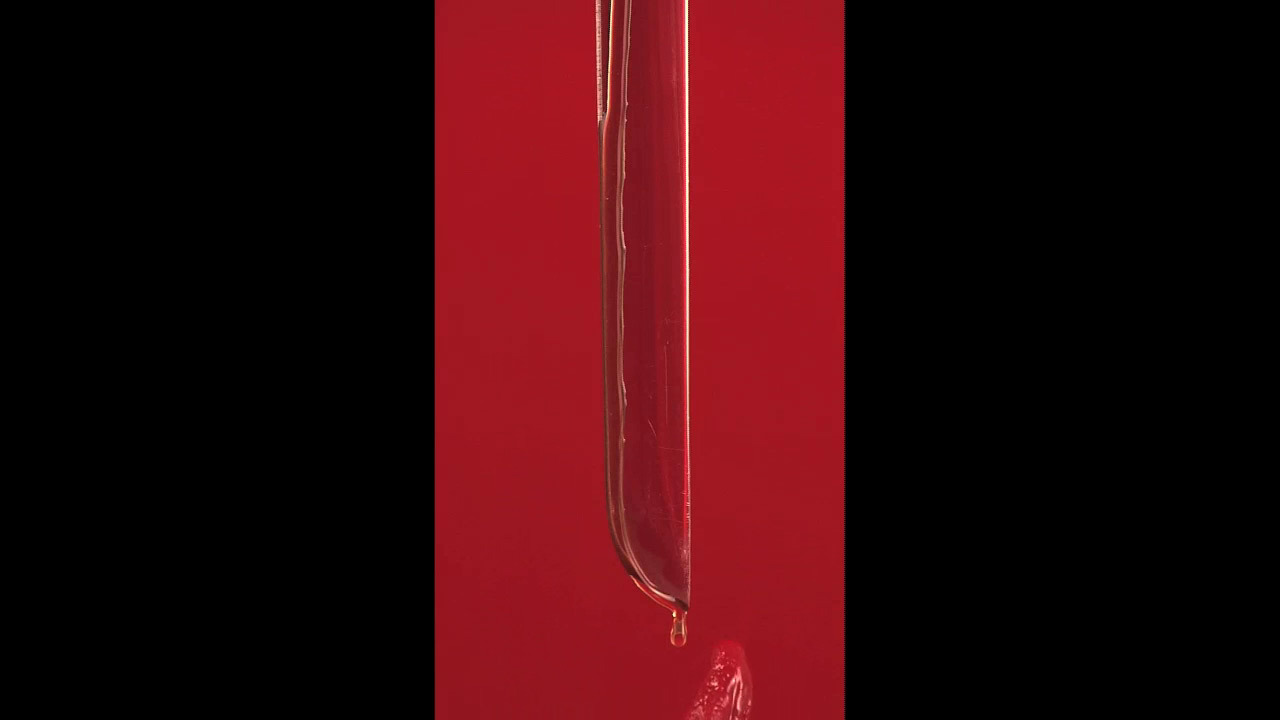
“This alternate fair is by now the oldest event of the Berlin Art Week, still smoking the competition.” pK.
The BERLINER LISTE will be held September 18 to 21, 2014.
pictured: Hye Young Kim KR Unfulfilled Desire II blindness 21:00 2013

“This alternate fair is by now the oldest event of the Berlin Art Week, still smoking the competition.” pK.
The BERLINER LISTE will be held September 18 to 21, 2014.
pictured: Hye Young Kim KR Unfulfilled Desire II blindness 21:00 2013
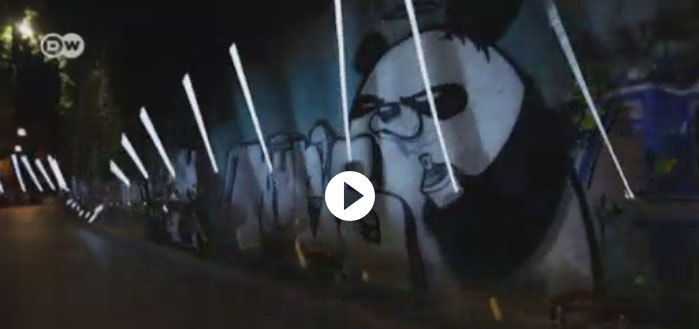
Interview with the German TV Deutsche Welle with Erdal Inci whose work was shown at the 10th Berlin International Directors Lounge in February.
With the graphic file “GIF” its possible to make short animations using very little data so that any internet browser can play them. Thats why, 30 years after their creation, GIFs are popular again with artists like Erdal Inci from Turkey. via DW.DE
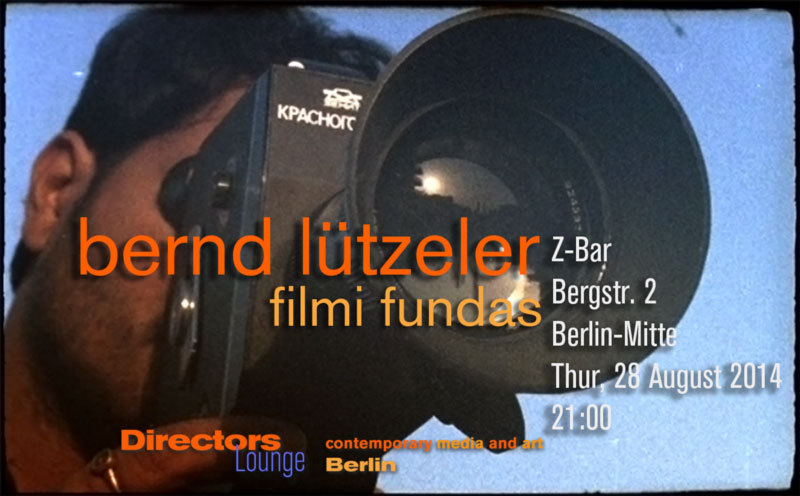
Directors Lounge Screening:
Bernd Lützeler
Filmi Fundas
Donnerstag, 28. August 2014
21:00
Z-Bar
Bergstraße 2
10115 Berlin-Mitte
Bernd Lützeler
with Eric Wilhelm Da Cruz
(German:)
Bernd Lützeler arbeitet als Künstler und Filmemacher sowohl mit analogem Film, als auch mit digitalen Medien. In seinen Arbeiten beschäftigt er sich mit der Ästhetik und Wahrnehmung von Bild und Ton und deren Wechselwirkungen mit Technologie und Gesellschaft. Ein weiterer thematischer Schwerpunkt sind die unterschiedlichen Erscheinungsformen des bewegten Bildes in der indischen Alltagskultur. Diese Themen setzt er nicht nur in linearen Filmprojekten, sondern auch in Film- und Raum-Installationen um. Einige der heute präsentierten Arbeiten sind aus Kollaborationen mit anderen Künstlern hervorgegangen, u.a. mit Kolja Kunt und mit seinem langjährigem Kollegen Eric Wilhelm da Cruz, der darüber hinaus auch einen eigenen Film zeigen wird.
(English:)
Bernd Lützeler, artist and film enthusiast who works with Super-8 and 35mm, also combines film and video in multi media installation work. In his work he is concerned with sound and image as distinct interfering media and their relations with technology and society. Also, he takes a specific interest in aspects of the audio-visual pop culture of India. He is a strong collaborator in order to create and exhibit. He worked with Kolja Kunt and Eric Wilhelm da Cruz on several projects. Part of the presentation will be an adapted super-8/video live show of “Eternal Showdown”, and a film by his colleague Eric Wilhelm da Cruz.
Artist Links:
http://www.nomasala.com/
Links:
Directors Lounge
http://www.directorslounge.net
Details:
http://www.richfilm.de/currentUpload/
Z-Bar
http://www.z-bar.de
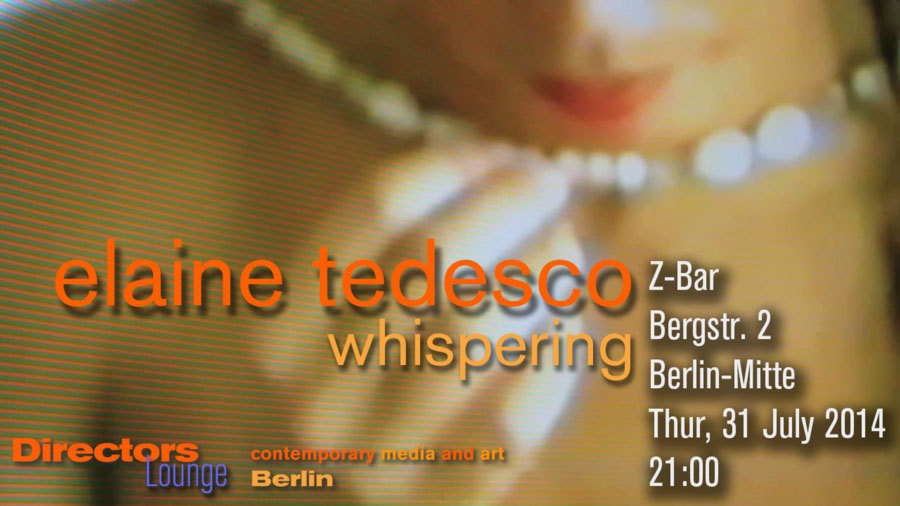
Directors Lounge Screening:
Elaine Tedesco
Whispering
Thursday, 31 July 2014
21:00
Z-Bar
Bergstraße 2
10115 Berlin-Mitte
This is set of videos by Brasilian artist Elaine Tedesco, a selection of works created between 1988 – 2012 and a work in process that she is realizing in Berlin. Divided into 4 groups: Video performances, domestic video notes, conversations and photography, it shows estrangements on looks at the daily life. Elaine Tedesco currently stays in Berlin at an artistic residence promoted by Instituto Goethe.
Artist Links:
http://www.comum.com/elainetedesco/
http://www.goethe.de/ins/br/poa/ver/res/de12352197.htm
Links:
Directors Lounge
http://www.directorslounge.net
Details:
http://www.richfilm.de/currentUpload/
Z-Bar
http://www.z-bar.de
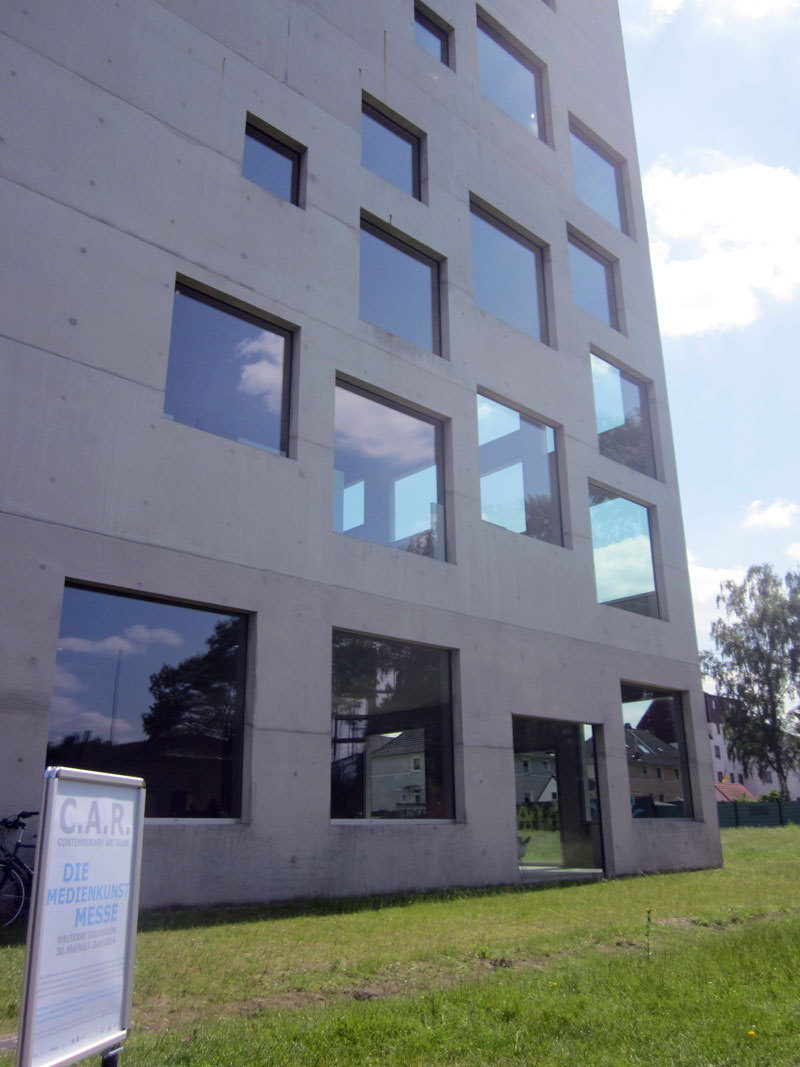
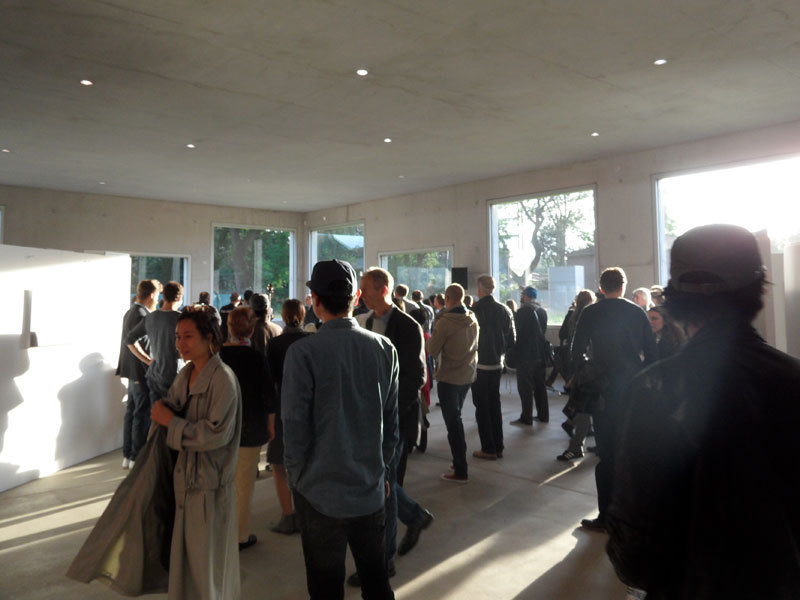
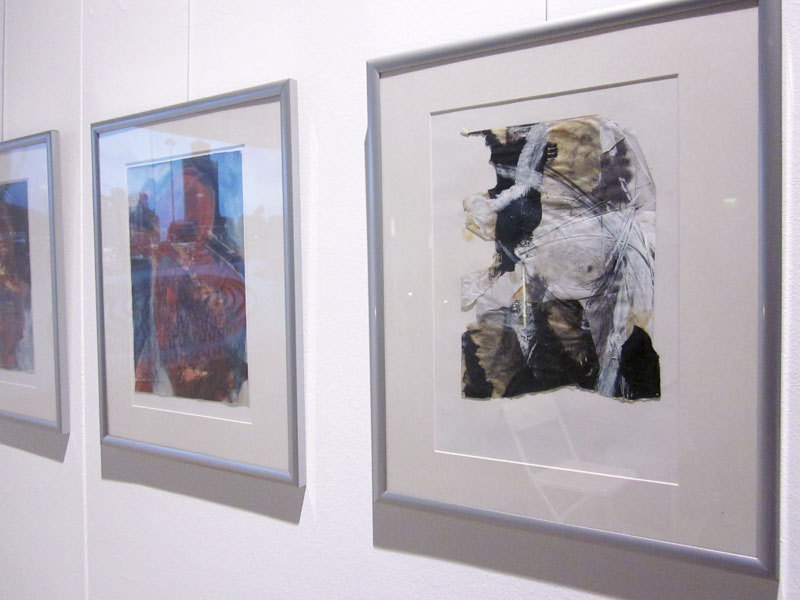
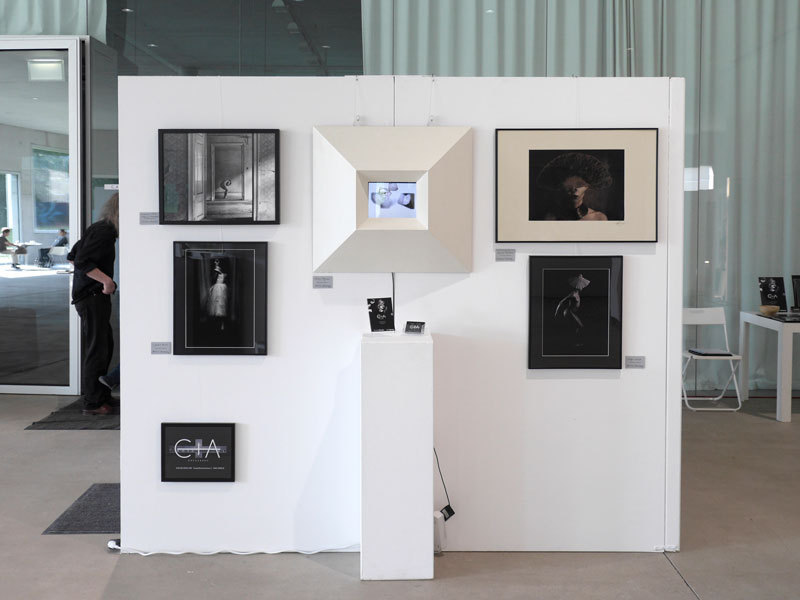
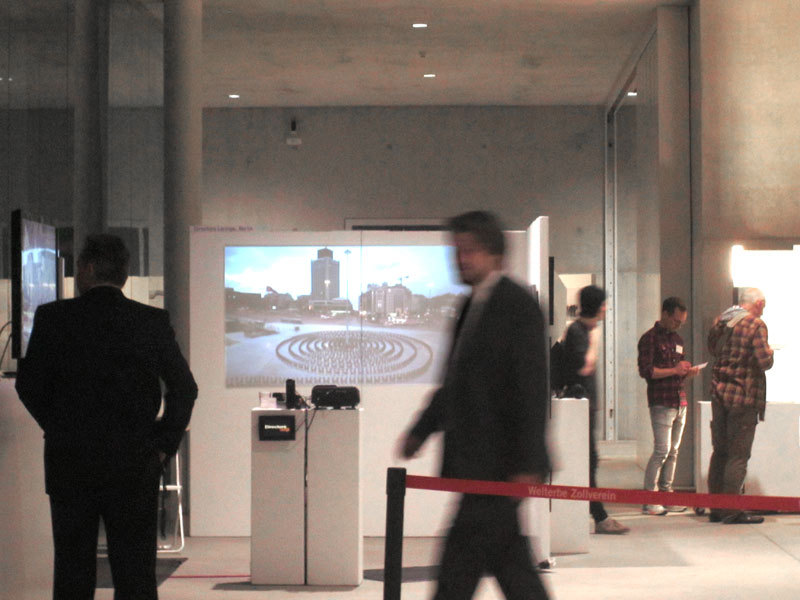
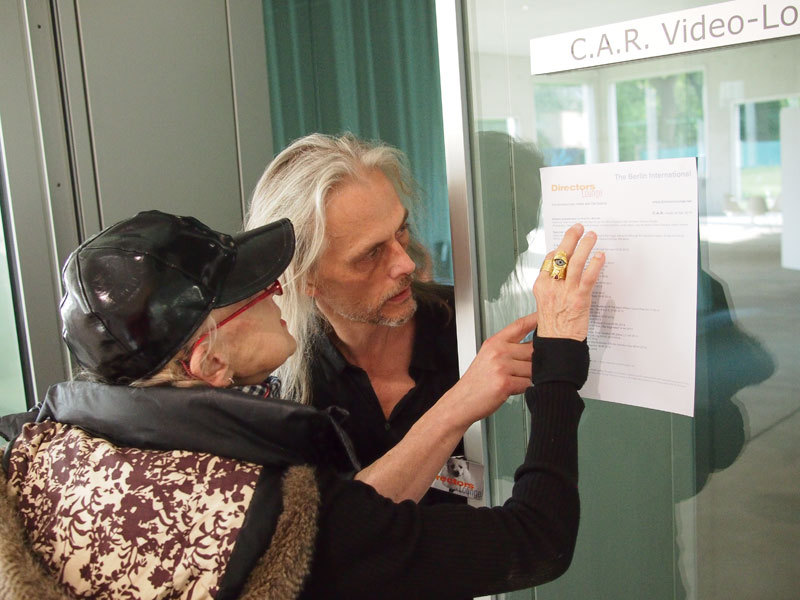

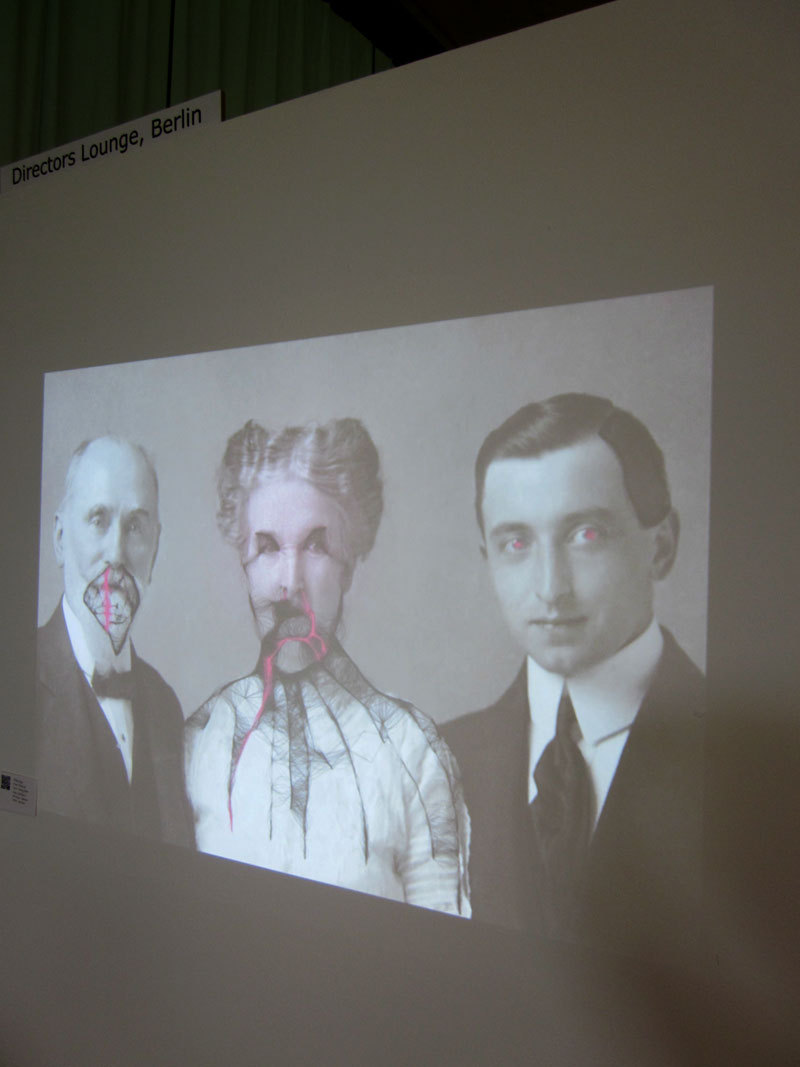
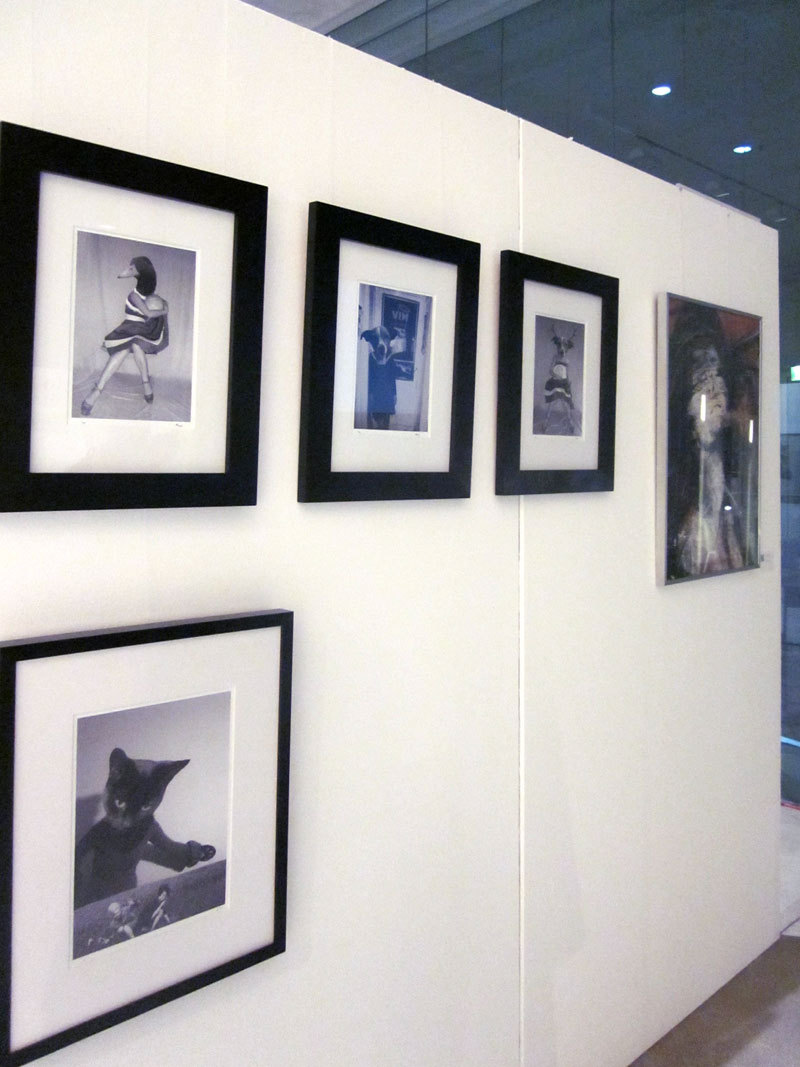

Impressions from the Contemporary Art Ruhr, Directors Lounge booth in cooperation with Atelier Cross Art.
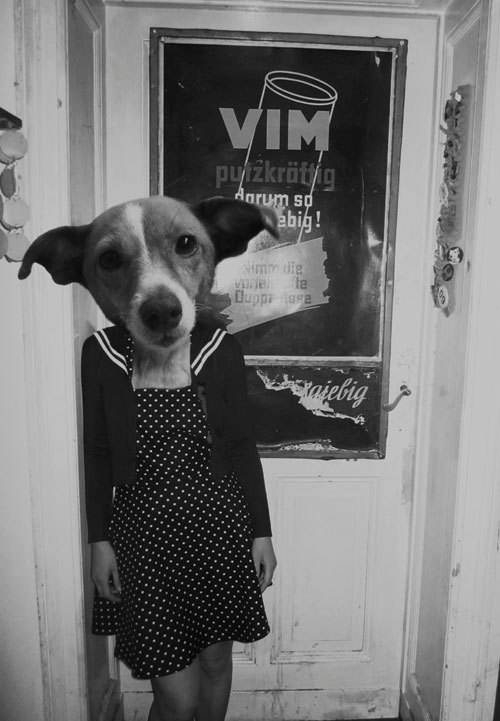
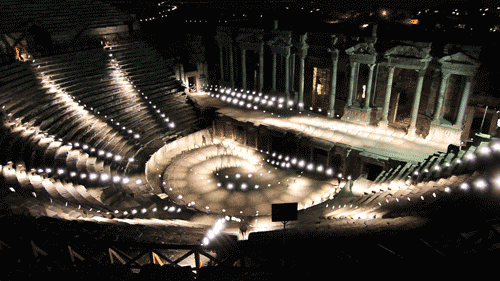
From Berlin straight out to the Ruhr, home to Germany’s concentrated multi-millions and “contemporary art ruhr,” a concentrated display of all that is here and now (and beyond) in the world of media art. C.A.R. spreads its considerable wings regularly, reaching a global tally of urban art-zones, but invites to its home turf in this bi-annual gathering of innovative thinkers. Directors Lounge has become a regular-as-clockwork contributor to the more daring summer fair, exporting its international imports and making the trip in person to see visitors through its specially curated mélange of onscreen marvels. The flicks selected join of a temporary world of razor-sharp installations, performance, photography and more, fodder for the wide-awake mind. With contributions from DL partner Cross Art (Zurich-Berlin) and more, a feast of film awaits at World Heritage Site Zollverein in Essen. Directors Lounge cordially invites you to electrify your senses.

Directors Lounge at the Car Video Lounge (Auditorium) with works by Engin Kilicatan, Tokomburu / Ion Papaspyrou and Zisis Kokkinidis, Zaoli Zhong, Hussen Ibraheem, Benedikt Kruger, Sebastian Lörscher, Xaver Xylophon, Aitor Marín Correcher, Jonathan Seyer, Jonathan Rescigno, AUJIK, Francesca Fini, Naren Wilks, Alberto Diaz Lopez, Hee-Seong Han, Hara Katsiki, APOTROPIA , Dimitris Argyriou, Studio Twins / Caroline Fayette & Chloé Guerbois, Elvira Bukowski, Gerard Freixes Ribera, Karl F. Stewart, Eleonora Manca, Michael Betancourt, Ingeborg Fülepp and Heiko Daxl, Mateo Grubisic, Haruka Mitani and Michael Lyons, Dunja Donassy and Bernd Wendt
Artists presented at the DL Booth:
Videos by Peter Freund, Erdal Inci, Hye Young Kim, Mirco Magnani, Alan Smithee, Shinkan Tamaki
Photography / Paintings by Stefanie Anastase and Claudia Köhn, Jackie Baier, Julia Murakami, Karin Schranz, André Werner
Special lecture Sun 3pm: Digital storytelling , an introduction of RFID books that trigger interaction through the flipping of pages. Books by Sandra Becker and Bego Santiago presented by Dr. Regina Francken, FKI Berlin

Directors Lounge at the contemporary art ruhr (C.A.R.) – the media art fair, May 30 – June 1, 2014
Zollverein World Heritage Site
SANAA-building, Areal A, Hall A35,
Gelsenkirchener Strasse 209,
45309 Essen, Germany
Public Fair Days
Saturday, May 31, 11 am – 7 pm
Sunday, June 1, 11 am – 7 pm
Entrance fee per day
8,- € / 6,- €
Map Zollverein
download
How to get there
Click hier
More:
www.contemporaryartruhr.de
Program:
Engin Kilicatan TR Chastity 03:55 2012
Tokomburu / Ion Papaspyrou and Zisis Kokkinidis GR I Am Not Here Now 09:30 2013
Zaoli Zhong CN A Dangerous Question 05:35 2012
Hussen Ibraheem LB Typo 07:00 2013
Benedikt Kruger, Sebastian Lörscher, Xaver Xylophon DE Zyklus I, 01:40 2011
Aitor Marín Correcher ES Lovearthcam 03:21 2013
Jonathan Seyer US Carbondale Mall 03:21 2013
Jonathan Rescigno FR Corengrato 10:00 2012
AUJIK JP/SE anxOxna 04:55 2014
Francesca Fini IT White Sugar 13:00 2013
Naren Wilks GB Fear & Delight 03:20 2013
Alberto Diaz Lopez ES Stringless 15:00 2013
Hee-Seong Han DE Triangle Circle Square 07:53 2011
Hara Katsiki DE OPIUM 01:55 2010
APOTROPIA IT Single # Double # Triple 10:00 2013
Dimitris Argyriou GR One Line 03:40 2013
Studio Twins (Caroline Fayette & Chloé Guerbois) FR The Island Where I Come From 03:10 2013
Elvira Bukowski EE Siberia 05:00 2013
Gerard Freixes Ribera ES The Parting Dance 03:00 2013
Karl F. Stewart DE Video of Shadows . Title A B or C 07:00 2013
Eleonora Manca IT Chrysalis Room 03:00 2013
Michael Betancourt US The Kodak Moment 02:00 2013
Kim Collmer DE/US The Conversation, 03:30 2013
Ingeborg Fülepp and Heiko Daxl Lost City, 03:13, 2011/2013
Mateo Grubisic Allusion 01:20 2014
Haruka Mitani and Michael Lyons JP 恋愛の大饗宴 (Banquet of Love) 06:30, 2014
Dunja Donassy and Bernd Wendt HR"Vivat – Sie möge leben" 4 min 2011
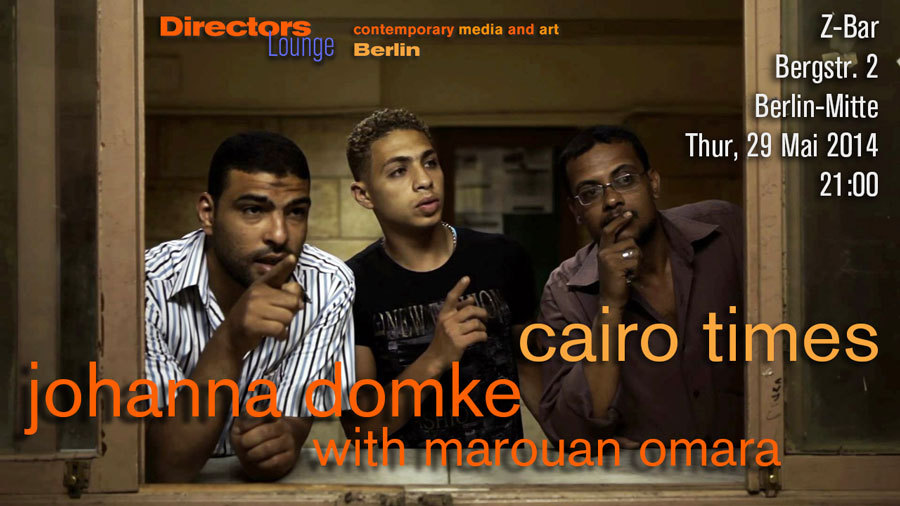
Directors Lounge Screening:
Johanna Domke
with Marouan Omara
Cairo Times
Thursday, 29 May 2014
21:00
Z-Bar
Bergstraße 2
10115 Berlin-Mitte
Crop is an astounding video piece about a state-owned newspaper building in the center of Kairo. Filmed in 2012 shortly after the revolution in Egypt, the video represents an interesting, historic moment in time, and it is at the same time a reflection on image making and image representation in times of political changes regardless of local bounds or temporality.
Set at the press house of Al Ahram (the Pyramids), a conservative newspaper that has been the national official press organ since President Nasser, the viewer is guided to explore the rooms of the house from the top down, following its hierarchy of places, literally from the representative offices down to the cellars with printing machines and packaging of newspaper bundles. While the camera unfolds step by step the complexities of a building, a photo-journalist talks about the beginnings of photo reportage in Egypt. He tells us he missed the revolution staying at the hospital. He speaks about the restrictions photo journalism has had to face from its beginning both from a conservative islamic society, and a regime controlling every publication. At first the journalist seem to be one person, but that is a fiction. His narration actually is a composition of 19 statements of different interviewed journalists, whose opinions differ in complex ways. The sound track of the film is comprised of two separate layers: the ambient sound that goes along with the passage of places that we follow inside the building, and on the other side the voice-over of the interviewed journalist. This voice-over creates a real contrapuntal montage in the sense of Eisenstein’s statement on sound film, whereas the ambient sound creates a poetic flow of images, a narrative of space.
The film, a collaboration between the video artist Johanna Domke and the film director Marouan Omara, was in several ways a lucky moment. Domke had planned her residency in Kairo at Townhouse Gallery before the beginning of the Arabic revolution, and the filming itself, including all the preparations and necessary permissions, was only possible in that short period of time of changes before the new regime took control again. The film thus represents a unique time in history while at the same time it gives a comprehensible glimpse of what it is like to work as a journalist under the restrictions of censorship. As Johanna told me, the team always asked for where the censorship actually had taken place, and were always referred to a different department. There was no official censorship office or censorship management, it was just part of the system as a whole. In certain ways, the press house depicted in the film truly resembles Kafka’s castle, where the power never manifests. Watching the film on the other hand may also give the impression of utterly familiarity with the building and its subdivisions, its poetry of space, the familiarity of bureaucratic space. In “Poetics of Space” Gaston Bachelard talks about the philosophy of space using a big family house as an example, something I always felt to be imperfect at least in reference to modernity, and in certain ways, the film “Crop” completes the picture of a modern poetics of space.
The artist, Johanna Domke, will be available for Q&A.
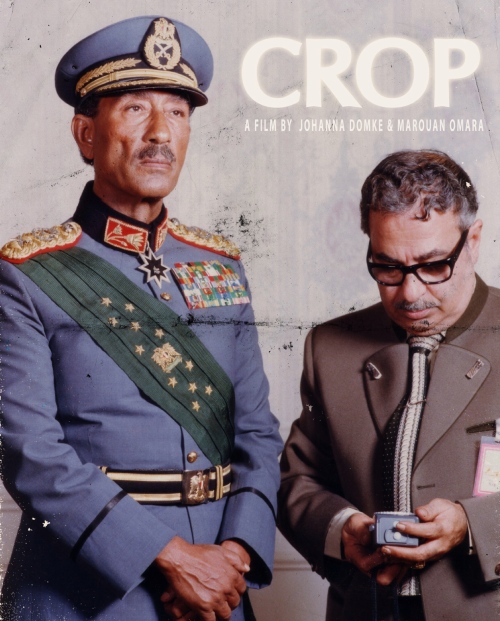
Program:
Cairo Times 12:23 min, 2013
Crop 47:08 min, 2012
Artist Links:
www.johannadomke.net
Links:
Directors Lounge
http://www.directorslounge.net
Full program details:
http://www.richfilm.de/currentUpload/
Z-Bar
http://www.z-bar.de
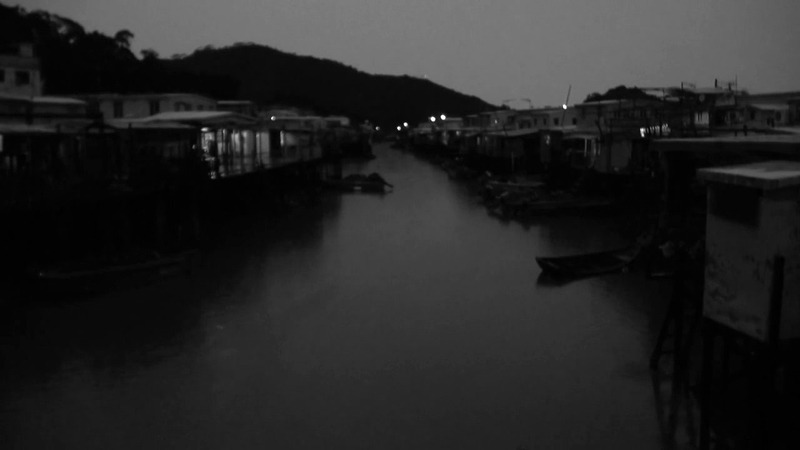
SCRUBBED TO THE SURFACE
by Kenton Turk
Orduna’s Vestigios (“Vestiges”) perplexes. In truth, it seduces without obvious charm before it perplexes. Scenes envelop and inhabit before revealing the traces of a narrative, thereby proving the title accurate. There is however steady advancement here – images collecting to have a cumulative value that nonetheless does not suffer under its own weight, somewhat akin to the progressive effect of a Fibonacci number: the ever-growing sum of the preceding two.
As such, a linear storyline remains before the door. But from lower reaches, a kind of narrative emerges, a celluloid palimpsest, the vague but profound reflections of a life led and by its end just perhaps grasped in terms of its most affecting components. What perplexes, to the credit of the film, is the fact that it provokes the sensation of a story being told without a discernable one being in evidence. The method used mimics closely the reductionism of a thought process, reversing the bottom-up superimposition of standard film art. This is the minimal, initial layer of storytelling. Vestigios initially seems like the bare bones of a film concept, the backdrops and the settings stripped of the actors, stripped of the dialogue, stripped of even those details that are intended to key viewers into a returning scene of action. It is as though the filmmaker decided his film was overloaded and continued reducing the ornamentation, until he reached a point that was far beyond his intention, but that proved eminently more satisfying than the combination of plot, dialogue and ambient noise: the true and elemental story at the core, the moments that remain when freed of a harnessing structure.
The reference points here are compositional signposts, static imagery with a hint of life breathed into them: starkly symmetrical images (rolling escalators, paired telephones, views down walled alleyways) move ever so slightly, the breathing of a cameraman, possibly, the playfulness of breeze, shifting light. Or your imagination. A mask that regards you with immobile features seems to move its eyes, slightly, after some long moments borne in increasing discomfort by the intensity of a stare that is without vision. Urban settings become vaguely disturbung (yet paradoxically comforting) for not being completely deserted, but being occupied by people heard but never in view, always behind walls and around corners. It is as though you, moving through these locales, have been summoned to be near but not enter.
For all of this, Vestigios is not in lack of anything. It can simultaneously be seen as a stark paring down of the film process and a deepening of pure content. The images accompany lyricism (appearing in interspersed Chinese characters as title cards) that sounds as spare to the Western ear as the images feel in visual terms. These move through philosophical musings and reflections on existence itself. “A long journey, a reflection, a fragrance… I leave submission behind” opens these ruminations. Questions posed (“Maybe everything is mere interpretation?”), questions answered (“The path is marked out”) and personal revelations (“I sought nudity so that nothing would hold me back”) counterpoint the barren images. Thus, the plotless story is unravelled. As well, the spartan soundtrack moves the “action” forward, with subtlety and without haste. A drumbeat evolves into heartbeat, and occasional din resolves itself in sudden silences.
In this way, Orduna combines the spare, observational qualities of Edison’s “actualities” and the torpid uneasiness of Lynch in a film that neither tells a story nor avoids telling one. These are the thoughts at the back of one’s head, ultimately more profound for not being expressible with simple and linear language, collecting and extending themselves to buoy up a core oxymoronically nebulous and defined.
Finally, Orduna turns the optical refuge of black and white into colour, golden tones moving towards blue. The film ends with this move into another sphere of reference, from two-dimensional monochromatism to three-dimensional chromatism, making one want to view the preceding again with the acquired knowledge of another level of vision. Reflection is inevitable, surely Orduna’s intention. Achieved with elegance and the most deceptively complex simplicity.
Vestigios was screened in World Premiere at [DLX], the 10th Berlin International Directors Lounge on 11 February 2014.
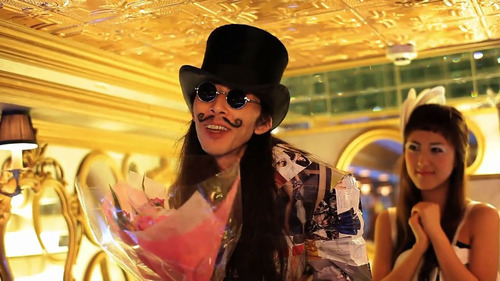
For the fourth year running, Directors Lounge answers the call to make its unique contribution to an exploration of the essence of Japan at the highly popular Düsseldorf festival called Japan Day, the largest of its kind worldwide.
Amidst an impressive presentation of cuisine and lectures, DL will attend to an audio-visual sally into Japan’s cultural being in the form of film art, as presenters in the Black Box cinema of the Filmmuseum. Not simply a sushi of well-worn superficialities, but a series of onscreen dives into the Japanese collective soul, cutting off distracting excess with the efficiency of a kaiken dagger.
Among these flickering outings will be Tetsuya Tomina’s “At The Last Stop Called Ghost Chimney,” an unsettling ride into an ominously persistent past in the form of four thermal power plant chimneys long gone but still present… to some eyes. Here, subtext rides along with three passengers whose manner and movement within darkened, compositionally stark spaces evokes the aesthetics of Manga as well as the masked formality of Noh. But this is just one of many; more awaits the avid Japanophile, conveniently closer than the distant isles themselves. Far Japan, not far at all. Directors Lounge is the Bullet Train to take you there.
With films by Julia Kim Smith, Pedro Collantes, Rebecca Culverhouse, Akinori Okada and Daisuke Hagiwara, AUJIK, Simon Lereng Wilmont, Masanobu Hiraoka,Tetsuya Tomina ; curated by Julia Murakami and André Werner
Location:
Directors Lounge at the Black Box Cinema,
Schulstr. 4, 40213 Duesseldorf (map)
17 May 2014, 8 pm
Don’t miss the fireworks afterwards!
The program:
Julia Kim Smith 99 Luftballons 2 min 2s 2014
Pedro Collantes ES/NL/JP Serori 15 min 20s 2014
There is always a first time for everything, even for celery.
http://mizunonaka.com/serori
AUJIK SE/JP anxOxna 4 min 55s 2014
Trees structured as a neural network
Axon and Dendrites-branches connecting through multiple forms of synapses. Individually programmed receptors. Flexible synthetic neurotransmitters. Axon terminal with receptive chaos outcome .
Post synaptic density calibrated through external sentient impacts.
A pan-computational AI-system.
http://www.aujik.com
Simon Lereng Wilmont DK Chikara – The Sumo Wrestlers Son 32 min 20s 2013
The film follows the 10-year-old Japanese boy Chikara and his struggle to become a sumo wrestler. His father, Harumitsu, was a professional sumo wrestler from one of Tokyo’s most successful sumo club, so expectations surrounding Chikara are extremely high. Today his father owns a noodle shop where he works a lot. Their only time together is when they train Sumo wrestling. It’s a very valuable time for Chikara. Chikara wants to impress his father, but when he’s there Chikara get’s really nervous and everything seems to go wrong. The annual national Sumo Championship is approaching and it means everything to Chikara to do well, so his father will be proud of him.
Rebecca Culverhouse Kichigai 28 min 52s (pictured)
In a city that never sleeps, the party never dies…. KICHIGAI is the semi autobiographical story of a real night out – or to be more precise, a blur of surreal nights out in Tokyo, mixed together with a cast of crazy characters and manga style subtitles.
Akinori Okada and Daisuke Hagiwara JP Yaoyoro´s 3 min 45s
Some Japanese believe in an ancient philosophy called Animism (Yaoyorozu), which basically states that everyday objects have their own life stories. We have created frame animations (root: anima, meaning “life”) based on our interpretation of those stories. 八百万の神に感謝!
http://yaoyoros.com
Masanobu Hiraoka JP Land 3 min 41s 2013
Abstraction and metamorphoses
Tetsuya Tomina At the Last Stop called Ghost Chimney 19 min 16s 2013 (pictured)
To spend more time with the bus driver she always liked, on the last day of school, a girl rides to the last stop called Ghost Chimney. Depending on the angle, it is looked one chimney or four chimneys. The girl and the bus driver dream of a world beyond the last stop… http://tetsuyatominafilm.com/

Directors Lounge monthly screenings
Thursday, 24 April 2014, 9pm
Z-Bar Bergstraße 2 10115 Berlin-Mitte
In attendance of the artist
Jonathan Rescigno works with a documentary approach towards his films, while transmuting into fictional stories. His starting point are day-to-day issues of his close surroundings, which then can shed the light to some greater matter. At the time he combines narrative methods with elements of early Avant-garde and Nouvelle Vague.
His search for a personal language and expression beyond the documentary school urged him to progress from earlier studies at film school to art school in Metz and further to “Film and Creative Documentaries Direction” in Strasbourg, where he finished his Master. His pictures combine a sensitive research of places and people with an essayistic image-oriented montage creating open and atmospherical depictions that give to the viewer space for interpretation.
In his films, Rescigno keeps coming back to themes concerning the region Lorraine, where he grew up. Lorraine used to be the prospering French coal mining area, connected with the German Ruhrgebiet by the so called Montanunion (European Coal and Steel Community) after the Word War II. With deindustrialization, the region has undergone difficult changes still under way. The films of the artist investigate questions of identity in the changing post-industrial landscape, and when the term migration is at risk to change meaning in French society.
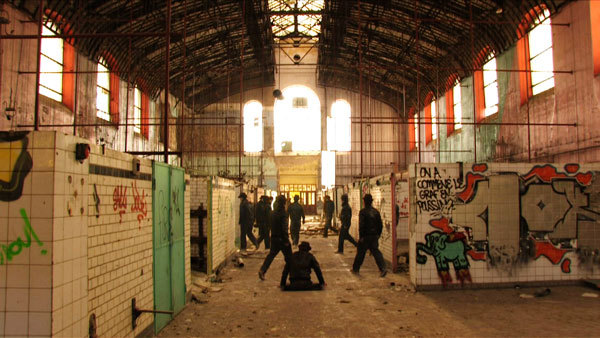
Jonathan Rescigno verfolgt einen dokumentarischen Ansatz, den er aber zugleich verwandelt und fiktionalisiert. Ihn interessieren Geschichten des Alltags seiner Umgebung, die aber zugleich von allgemeiner Bedeutung sein können, und er verbindet so Mittel des narrativen, sozial engagierten Filmes mit Elementen der frühen Avantgarde und der Nouvelle Vague. Diese Suche nach einer eigenen Bildsprache brachte ihn auch dazu, von der Filmschule an die Kunsthochschule Metz zu wechseln und schließlich mit Film and Creative Documentaries Direction in Straßburg abzuschließen. Seine Bilder verbindet eine subtile Recherche von Orten und Menschen mit einem essayistischen Bildansatz in der Montage, der eher einer offenen atmosphärischen Beschreibung folgt und dem Betrachter den Spielraum zur eigenen Interpretation läßt, statt in dokumentarischer Manier Fakten zu konstruieren.
Der Künstler ist anwesend und wird in das Programm einführen. Mit anschließender Diskussion.